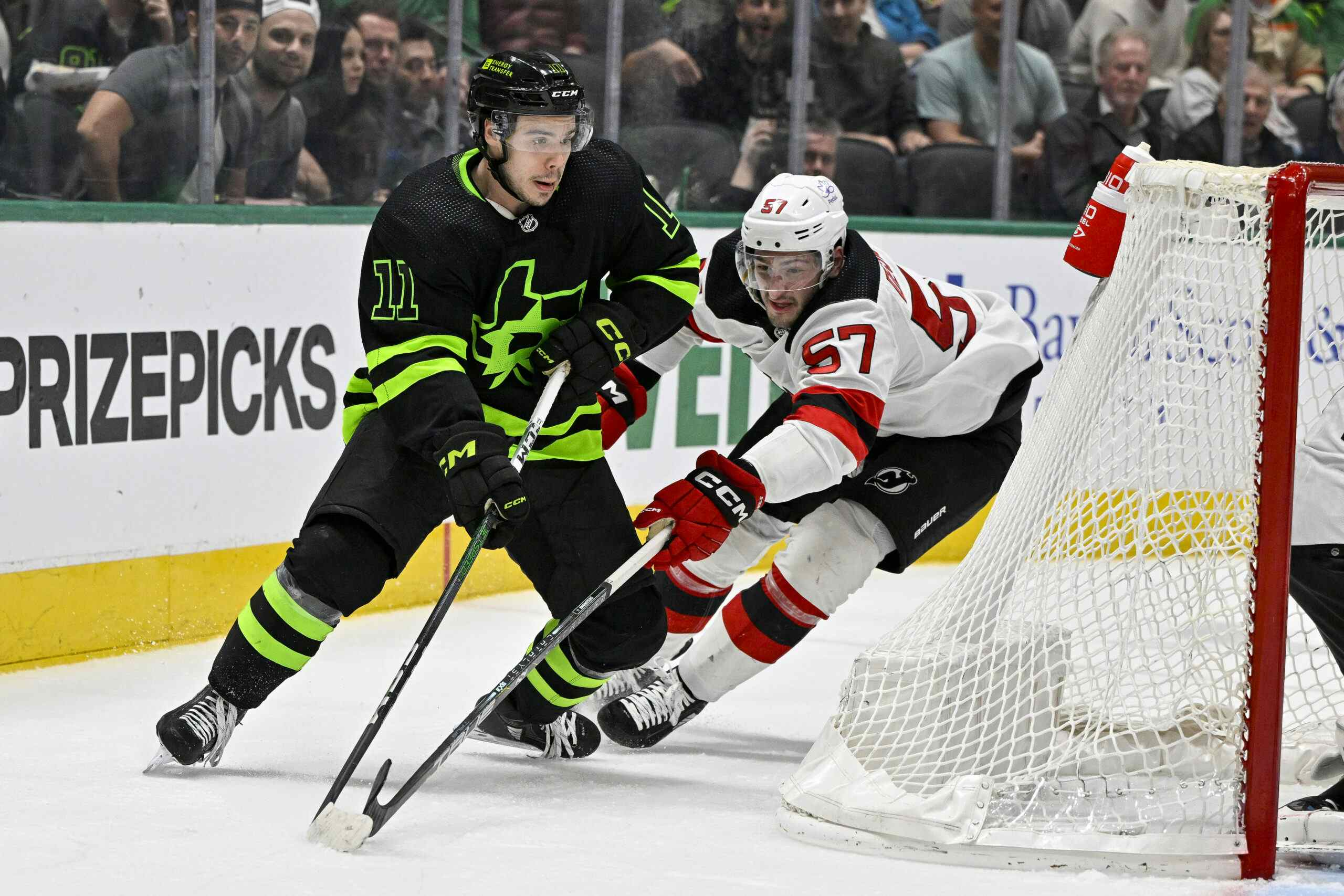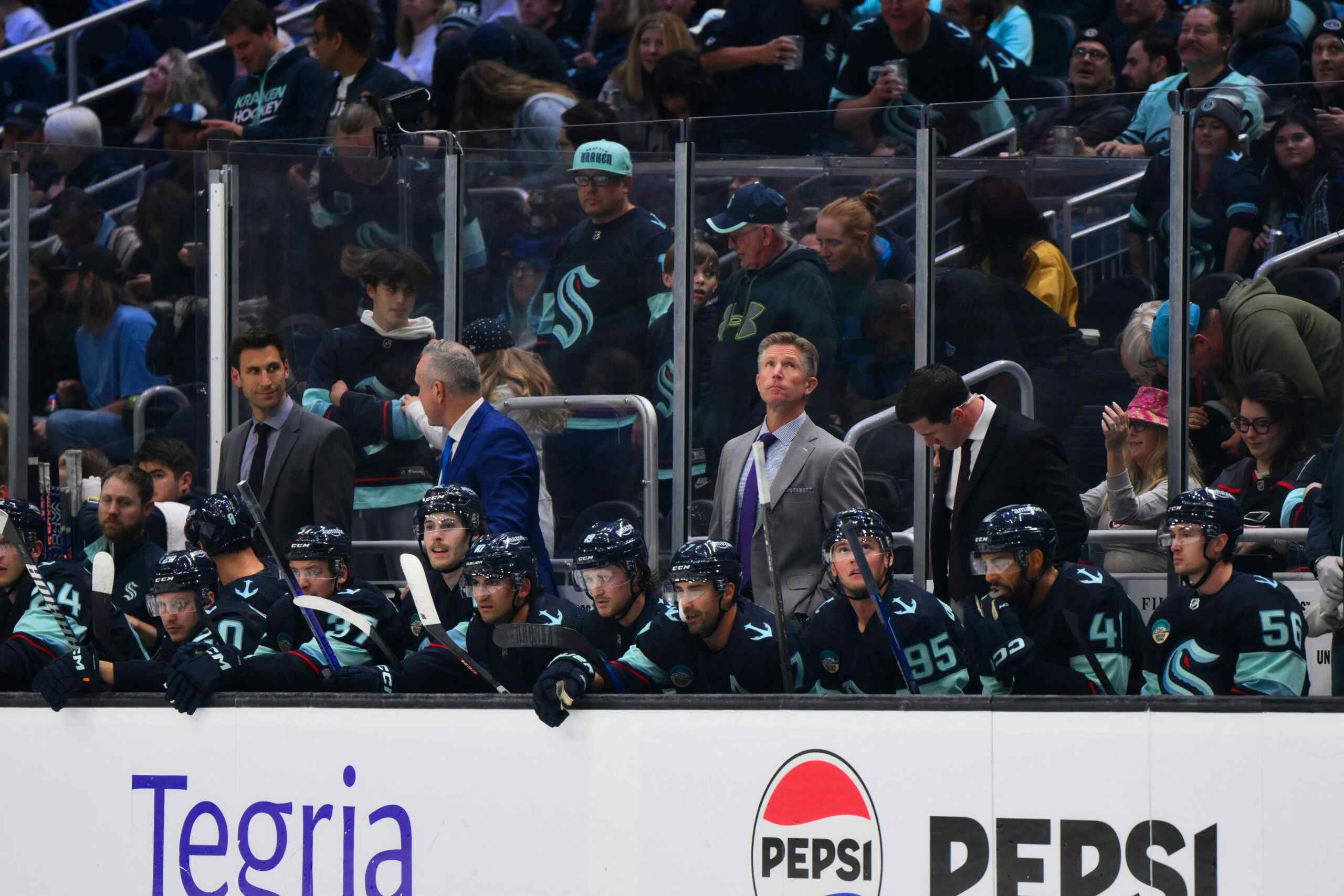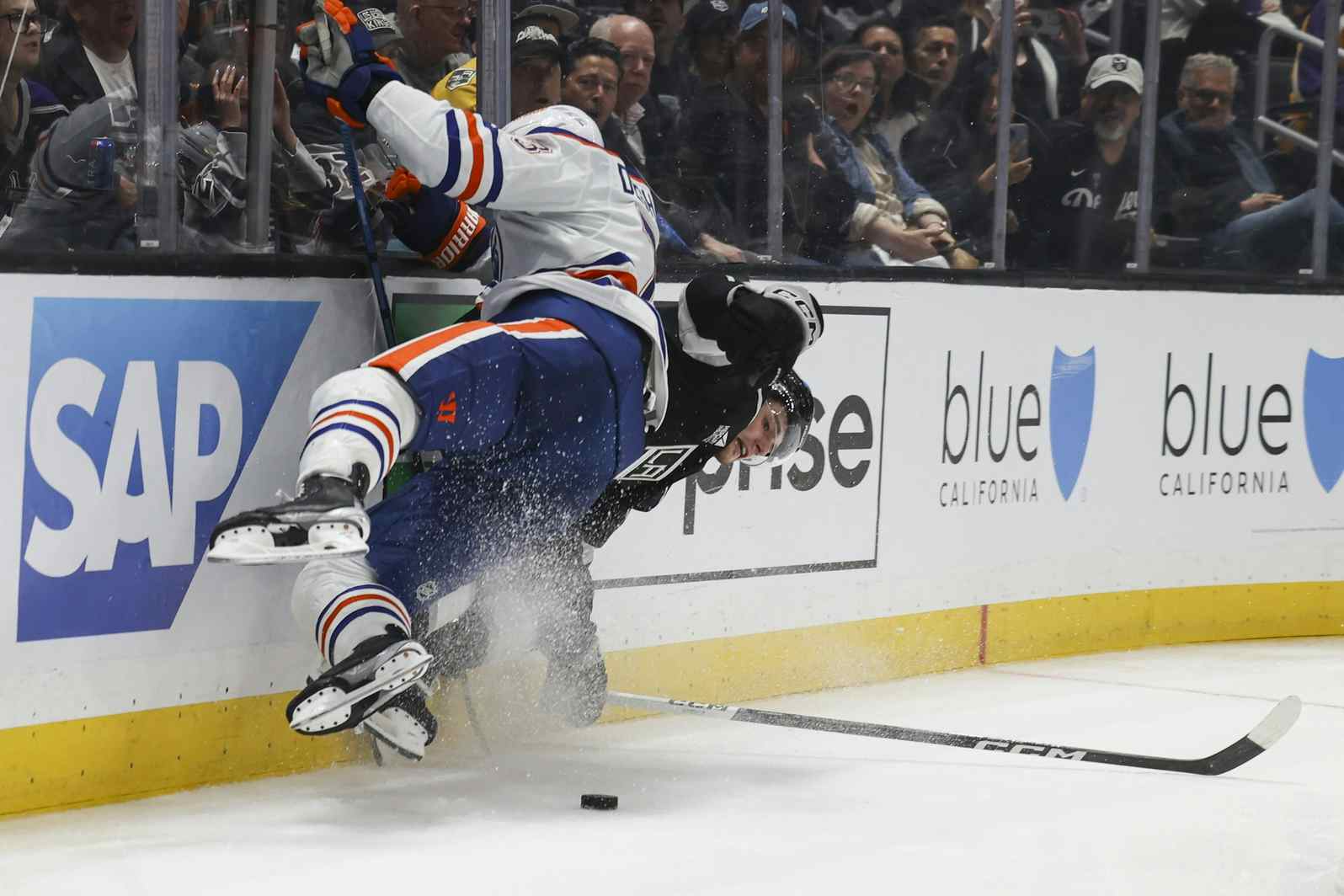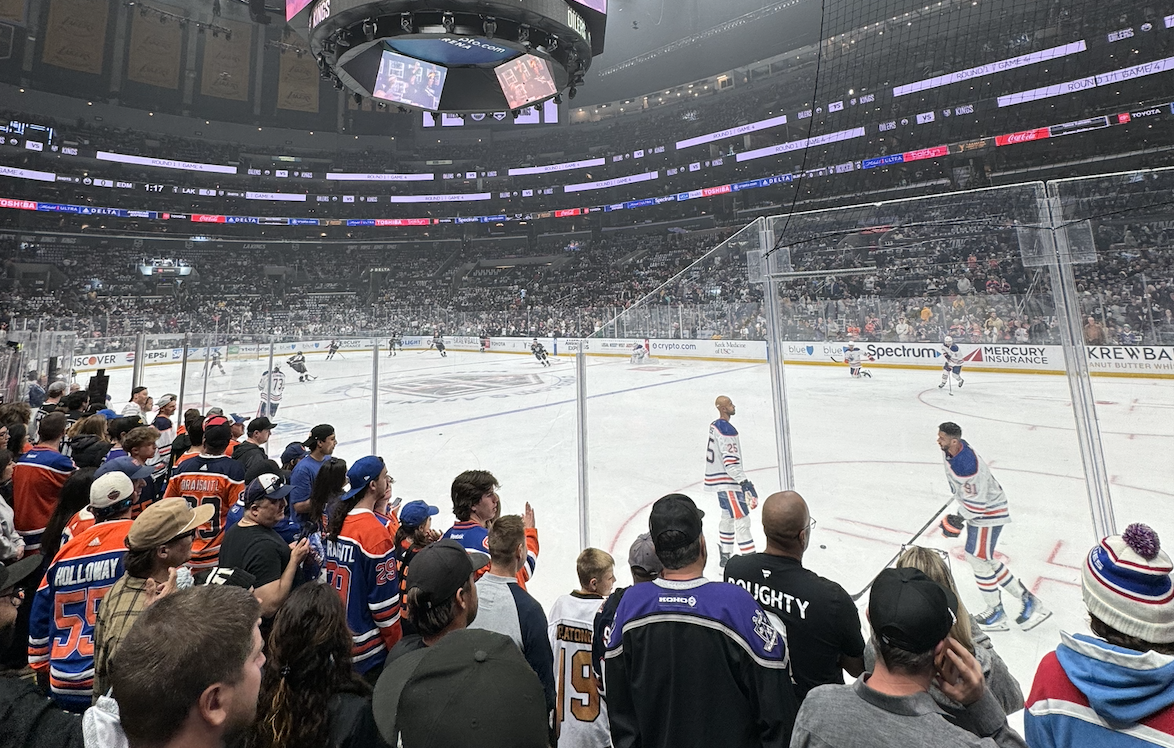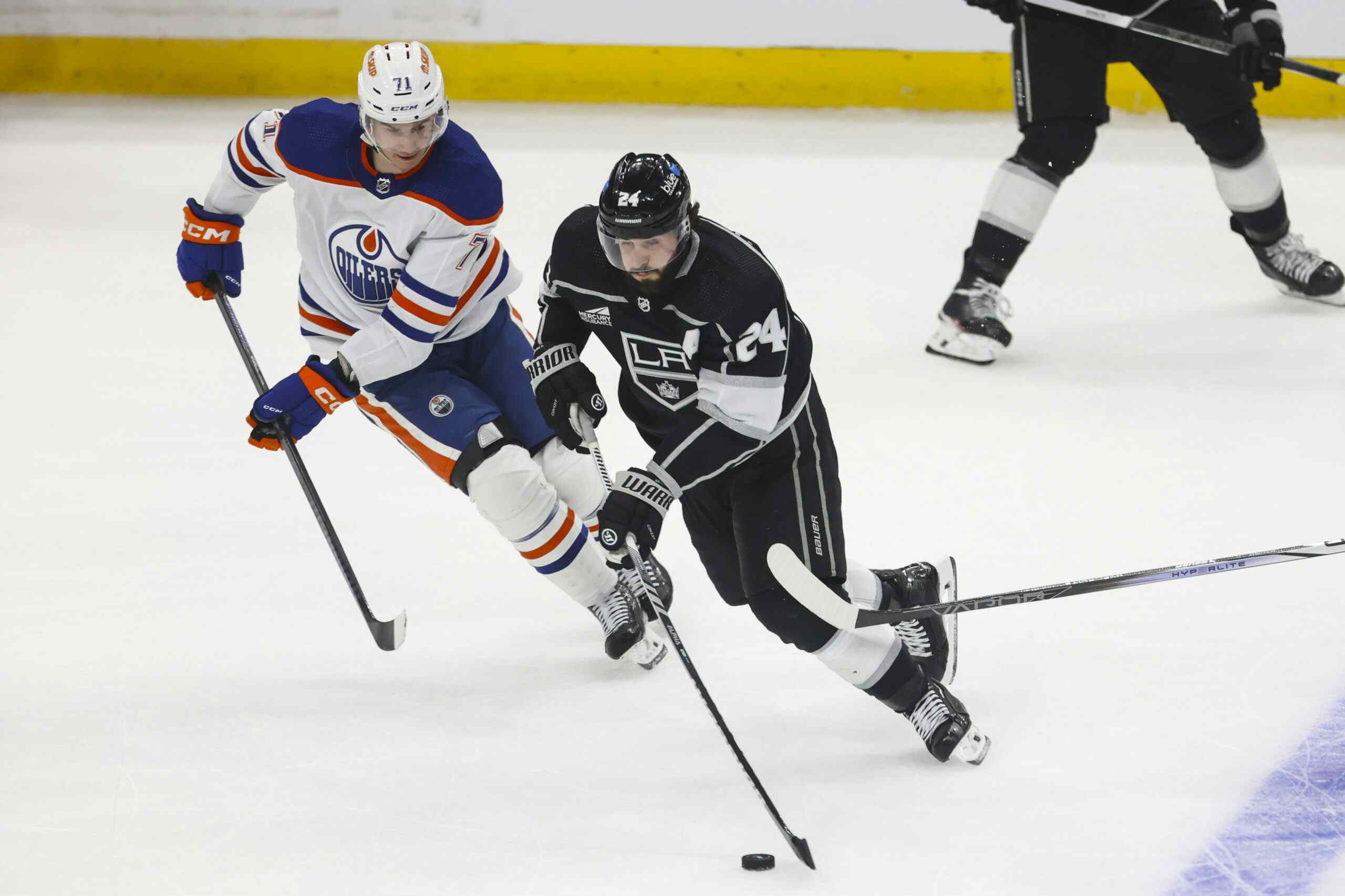The Edmonton Oilers’ defensive strategy

The Oilers’ strategy for their defenceman was a little mystifying at first, partially because they’d put one foot very wrong and partially because they were losing all the time so we weren’t actually observing how things were going to change when the team won a game or two. Now that we’ve seen the team win and lose, it’s a lot easier to pick up on exactly what the coaching staff is doing.
The “First” Pairing

The top tandem by ice time is built around Justin Schultz, and is predicated on the theory that he’s a brilliant offensive defenceman. His ice-time shows that clearly enough; it’s interesting to compare it in wins and losses:
- Oct. 9: Loss, 23:28 TOI
- Oct. 11: Loss, 22:29 TOI
- Oct. 14: Loss, 24:14 TOI
- Oct. 15: Loss, 27:07 TOI
- Oct. 17: Loss, 23:54 TOI
- Oct. 20: Win, 19:48 TOI
- Oct. 22: Win, 18:52 TOI
- Oct. 24: Win, 18:42 TOI
- Oct. 27: Win, 19:25 TOI
- Oct. 29: Loss, 24:35 TOI
In Edmonton’s four wins Schultz hasn’t cracked 20:00 per game, while in their four losses he hasn’t played less than 22:29. It would be fun to argue that this is a clear sign he needs to play less because the team does better when his ice time is reduced (I’ve heard some fun stories of agents making these kinds of arguments at salary negotiation time) but this confuses cause and effect. Schultz plays more when the team is trailing because the Oilers think he’s their best option to go out and get a goal. He plays less when the team is leading because the club has other options it prizes more in the defensive end.
Schultz is also getting a massive push in the offensive zone (61.5 percent zone starts) and he’s not really seeing tough competition. This is to a degree the sort of thing Chicago does with Duncan Keith – giving a guy with real offensive skills as much ice time in offensive situations as possible. It also means that while Schultz plays a lot of minutes, he’s not generally out there defending in his own end or against top competition.

That’s why the Oilers have felt comfortable sending out Brad Hunt and Darnell Nurse with Schultz. It’s not a soft minutes pairing exactly, but it is a primarily offensive pairing and as a result the defensive heavy lifting goes elsewhere.
The “Second” Pairing

Jeff Petry’s time on ice is pretty interesting to watch, as it’s the exact reverse of Schultz’s. Petry hasn’t cracked the 20:00 mark in any of the Oilers’ six losses; he also hasn’t played fewer than 20 minutes in any of the Oilers wins. Schultz’s lowest ice time in a loss came on October 11 against Vancovuer, a game where the Oilers had a lead for a while before blowing it; Petry’s highest ice time in a loss came in that same game.
This isn’t a coincidence; just as Schultz and partner are getting a ton of general purpose minutes when the team needs a goal, Ference and Petry are getting a ton of general purpose minutes when the team needs to prevent a goal against.
The ‘opposite Schultz’ routine carries over to zonestarts, too, where Petry is sitting at 40.9 percent and Ference is even a touch lower at 37.0 percent.
The Shutdown Pairing

We’ve talked a lot about zone starts but have skirted the issue of quality of competition. That’s because the “third” pair is getting the bulk of those minutes.
The ice time against Nashville’s top forward trio (Filip Forsberg, Mike Ribeiro – wouldn’t he look good in Edmonton? – and James Neal) on Wednesday night makes that pretty clear:
- Justin Schultz vs. Ribeiro: 5:08
- Jeff Petry vs. Ribeiro: 2:27
- Mark Fayne vs. Ribeiro: 10:16
Martin Marincin and Mark Fayne are getting the job of shadowing the opposition’s top line. Game-to-game, Petry and Schultz tend to switch spots depending on situation (in games where the Oilers trail, Schultz gets lots of minutes, including some time against the opposition’s top line; in games where the Oilers lead Petry gets lots of minutes, including some time against the opposition’s top line).
Marincin and Fayne are to the defence what the Boyd Gordon trio is to the forward group, except that instead of being defensive zone specialists the tandem specializes in tough opposition.
Is this a good plan?

All three defence pairings are to a degree general purpose units in the sense that the coaches aren’t going to blow a gasket if Schultz or Petry gets matched up against a top line or if Fayne and Marincin are out there for an offensive zone draw. But the plan pretty clearly identifies a specialty area for each tandem:
- Schultz and Nikitin/Hunt: Offensive situations and when trailing
- Petry and Ference: Defensive situations and when leading
- Fayne and Marincin: Tough competition
It’s clear some thought went into this, and for what it’s worth I think that in theory this is a smart, creative way of running a by-committee defence that has a bunch of useful pieces but no real No. 1 defender. Schultz is a whiz offensively (he’s led all regular Oilers defencemen in points/60 at even strength since joining the team) but Petry is every bit as good at advancing the puck out of the zone so their assignments make good sense; so too does deploying Fayne in the kind of tough minutes role he played in New Jersey.
The problem is on the left side, because the position simply isn’t good enough.

I’m not sold one way or the other on Nikitin, who has fought through ankle and back problems to play; his track record in the NHL is inconsistent but I’m reasonably convinced he’s a better defenceman than we’ve seen to-date in Edmonton. His range of skills makes him a reasonable fit on any of these units but as long as he’s below 100 percent he’ll have issues.

This seems like the best use of Ference, who gets a primarily defensive role while not being asked to take on tough opposition. He also gets to play with Petry here, and while Petry is a controversial player in Edmonton his partner always seems to be well-loved by the fans. Ladislav Smid fell off a cliff when he was moved to Calgary and a rookie Martin Marincin was suddenly ready for tough minutes when he was paired with Petry; after a while the common link should be pretty clear. Speaking of which: Ference has a positive Corsi rating and a 37.0 percent zone start – some of that is playing in trailing situations but even so that’s an awfully nice number.
Poor Marincin gets tossed into the deep end once again, and it’s not really clear that he’s ready for it – how many defencemen with 50 games under their belt are? But he’s in the NHL and the reality is that with Nikitin either hurt and out of the lineup or hurt and in the lineup and given Ference’s limitations Marincin is probably the team’s best option for this assignment at this point in time.
It looks to me, in short, like the coaches are doing their best to turn chicken crap into chicken salad, and I find it hard to fault their process here now that we have a decent read on what they’re doing. If Nikitin’s out for any length of time I expect we’ll see Oscar Klefbom recalled and Hunt returned to the press box, but I can’t even blame them for playing Hunt if Nikitin is just day-to-day; Klefbom should only be on the team if he’s going to get some games in.
I know it’s popular to rag on the coaching staff these days, but overall this looks like a solid plan that makes the best use of a pretty mediocre collection of defencemen.
RECENTLY BY JONATHAN WILLIS
Recent articles from Jonathan Willis

